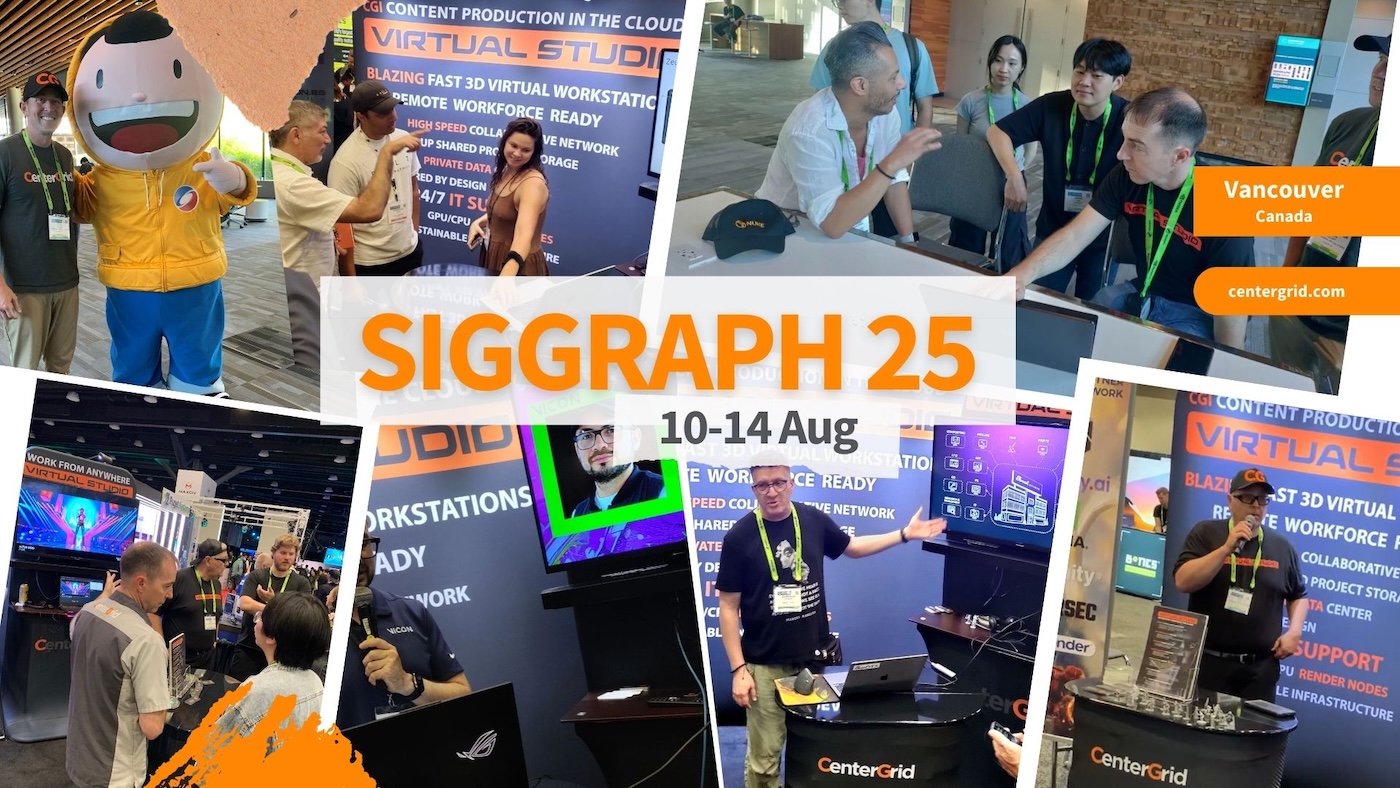Just wrapped up an incredible week at SIGGRAPH in Vancouver, and wow, what a ride. As someone who lives and breathes the intersection of technology and creative workflows at CenterGrid, we couldn’t help but notice some major trends that are reshaping how our industry works. Here are my three biggest takeaways from the show floor conversations, keynotes, and late-night networking sessions.
AI is as Prominent in VFX as Any Other Industry
If you thought VFX might be slower to adopt AI, think again.
Every booth, every demo, every conversation seemed to circle back to artificial intelligence in some form. From AI-powered rotoscoping tools that can cut manual work by 80% to machine learning algorithms that predict rendering times with scary accuracy, the technology is everywhere. What struck me most wasn’t just the prevalence of AI tools, but how naturally artists and technical directors were talking about integrating them into their daily workflows.
The resistance we expected to see just wasn’t there. Instead, we found professionals who were genuinely excited about AI handling the tedious stuff so they could focus on the creative decisions that really matter. Whether it’s automated cleanup passes, intelligent asset tagging, or predictive resource allocation, AI isn’t replacing creativity in VFX. It’s amplifying it.
VFX Talent is Abundant, But Relationships Drive Employment
The talent pool in VFX has never been deeper, but landing that next gig still comes down to who you know.
Walking through the career pavilion and talking with both seasoned professionals and fresh graduates, one thing became crystal clear: technical skills are table stakes now. Everyone can model, everyone can composite, everyone knows the latest software. What separates the consistently employed from those scrambling for work isn’t just portfolio quality, it’s network quality.
The most successful freelancers and studio hoppers I met all had the same strategy. They invest heavily in relationships, show up to industry events, and maintain connections even when they’re not actively job hunting. It’s not about schmoozing, it’s about building genuine professional relationships that create opportunities down the road. In an industry where projects are temporary and teams constantly shift, being the person that supervisors remember and trust makes all the difference.
Cloud and Remote Work is Making Waves in VFX
The shift to cloud-based workflows isn’t coming anymore, it’s already here.
Studio after studio mentioned significant interest in moving their infrastructure cloud-based, and the conversations weren’t just about whether to move to the cloud, but how to do it better. Virtual GPU-accelerated workstations are becoming the norm rather than the exception, allowing artists to work from anywhere with the same performance they’d get from a high-end local machine.
What’s really exciting is how this is democratizing access to top-tier tools and hardware. Smaller studios can now compete on technical capabilities without massive capital investments in workstations and render farms. Remote artists can collaborate in real-time on complex projects without being tied to a specific geographic location. The technology has finally caught up to the promise of truly flexible, location-independent VFX work.
The pandemic forced the industry to prove remote work could function, but now we’re seeing it thrive. Cloud rendering, virtual workstations, and collaborative platforms aren’t emergency measures anymore. They’re strategic advantages that forward-thinking studios are using to access global talent pools and reduce overhead costs.
SIGGRAPH always leaves us energized about where the industry is heading, and this year was no exception. These trends aren’t just shaping how VFX gets made, they’re redefining what it means to work in this space. For those of us building the infrastructure that powers these workflows, it’s an exciting time to be solving the challenges that matter most.

